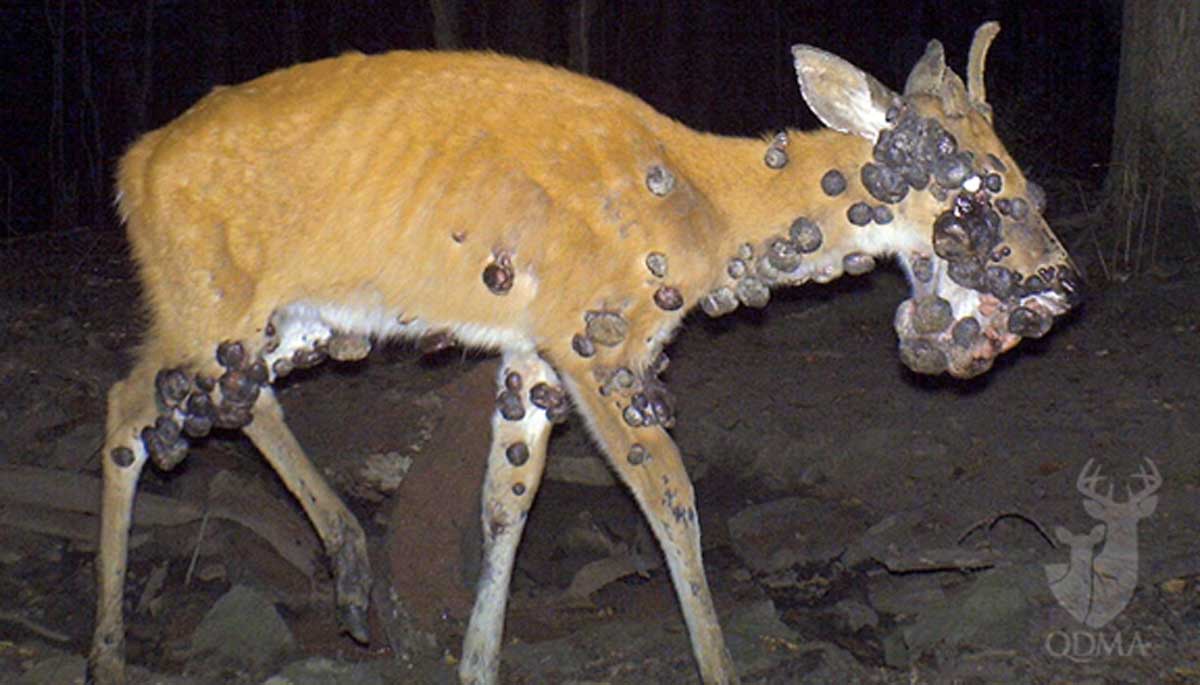Fibromas, aka warts, are benign tumors that grow on elk’s skin and occasionally inside their digestive tracts. There are many variations when it comes to fibromas—almost all of them gross. These fleshy, hairless, nodular growths can be covered in gray skin, sometimes cracked or bleeding. Other times they’re covered in a hard, black, dry, fissured coating resembling a rotting cauliflower. The heavy ones can even droop over off an animal’s body. Fibromas are usually small, but they can grow up to 8 inches in diameter. Most often found near the face (especially around the eyes), neck and forelegs, they sprout singularly or in clumps—up to 25 or more on heavily infected animals. In extreme cases, they can coalesce into one big mass. In deer, they’re caused by a papilloma virus, and that’s the most likely culprit in elk, too.
The good news is that they’re relatively uncommon in elk. You’re much more likely to see them on whitetails (pictured above), blacktails or mule deer—especially the truly gnarly outbreaks.
The best news is that, despite their appearance, fibromas are usually no big deal—for animals or the hunters who chase them. Fibromas don’t penetrate beneath the skin and generally have little or no impact on an animal’s health. Unless a secondary infection occurs or the fibromas grow so out of control they block an animal’s mouth or eyes or make it difficult to move, they’ll be just fine. Despite gruesome photos (like the one above) that suggest otherwise, most fibromas are small and dry up and disappear on their own.
Aside from inducing a queasy stomach, the virus has never been known to infect humans. Nor does it have any effect on meat quality. Nasty as they can look, fibromas are only skin-deep, so they depart with the hide when an animal is skinned.
(Photo of infected whitetail deer via QDMA)
